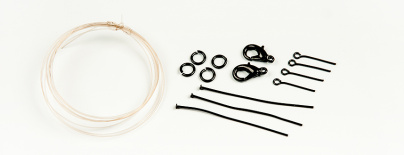One of the phenomena which Jizera Mountains costume jewellery now boasts is jet or black costume jewellery.
The history of jewellery made of jet, which is a rare type of brown coal, stretches back several thousands of years into the past. It was used to adorn the people of the Stone Age, the Babylonians and the Romans and they ascribed curative properties to it. Given the fact that real jet was too expensive, excellent cheap imitations were made using different materials. Thanks to its general popularity, it began to be imitated in England and France using glass. It was just a matter of time before the production of imitation jet jewellery came to the Jizera Mountains in association with the Europe-wide “black fashion”.
We will bring you a touch of history and present a tutorial for the production of a luxurious set of black costume jewellery made of seed beads and beads from the PRECIOSA Traditional Czech BeadsTM range.
She is able to switch from luxurious and extravagant fashion show pieces to the preparation of hobby projects,
Learn MoreEye pins, a ring, a snap hook, nylon

This pattern is for highly skilled and patient “bead workers”. This involves an unusual puzzle. First sew 5x so-called doll shapes and 4x flowers. Then connect everything, one row after another and then link the lower section at the end.
Share this project with your friends
This website uses cookies
PRECIOSA ORNELA, a.s. hereby informs you that its website uses cookies You can find more information about our cookies and how your data is processed in the privacy statement. We request your consent to use cookies specified below.